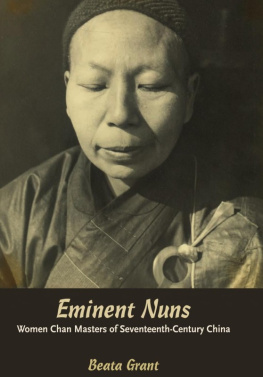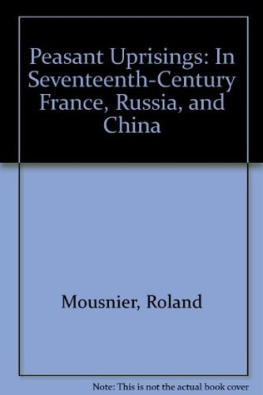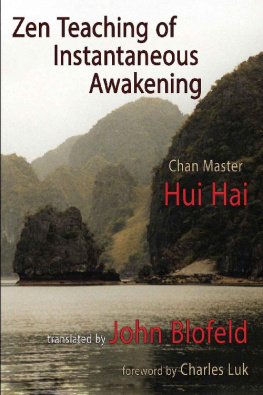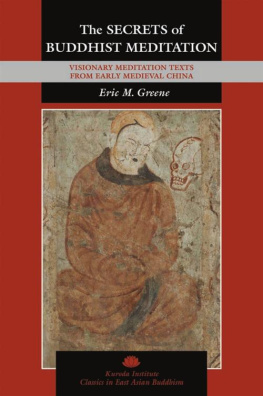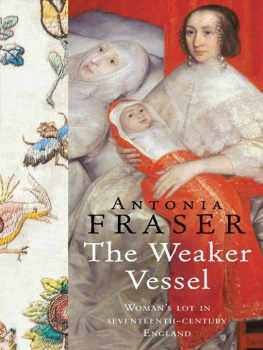Beata Grant - Eminent Nuns: Women Chan Masters of Seventeenth-Century China
Here you can read online Beata Grant - Eminent Nuns: Women Chan Masters of Seventeenth-Century China full text of the book (entire story) in english for free. Download pdf and epub, get meaning, cover and reviews about this ebook. year: 2008, publisher: University of Hawaii Press, genre: Religion. Description of the work, (preface) as well as reviews are available. Best literature library LitArk.com created for fans of good reading and offers a wide selection of genres:
Romance novel
Science fiction
Adventure
Detective
Science
History
Home and family
Prose
Art
Politics
Computer
Non-fiction
Religion
Business
Children
Humor
Choose a favorite category and find really read worthwhile books. Enjoy immersion in the world of imagination, feel the emotions of the characters or learn something new for yourself, make an fascinating discovery.
- Book:Eminent Nuns: Women Chan Masters of Seventeenth-Century China
- Author:
- Publisher:University of Hawaii Press
- Genre:
- Year:2008
- Rating:5 / 5
- Favourites:Add to favourites
- Your mark:
- 100
- 1
- 2
- 3
- 4
- 5
Eminent Nuns: Women Chan Masters of Seventeenth-Century China: summary, description and annotation
We offer to read an annotation, description, summary or preface (depends on what the author of the book "Eminent Nuns: Women Chan Masters of Seventeenth-Century China" wrote himself). If you haven't found the necessary information about the book — write in the comments, we will try to find it.
Beata Grant: author's other books
Who wrote Eminent Nuns: Women Chan Masters of Seventeenth-Century China? Find out the surname, the name of the author of the book and a list of all author's works by series.
Eminent Nuns: Women Chan Masters of Seventeenth-Century China — read online for free the complete book (whole text) full work
Below is the text of the book, divided by pages. System saving the place of the last page read, allows you to conveniently read the book "Eminent Nuns: Women Chan Masters of Seventeenth-Century China" online for free, without having to search again every time where you left off. Put a bookmark, and you can go to the page where you finished reading at any time.
Font size:
Interval:
Bookmark:
Eminent Nuns
2009 University of Hawaii Press
All rights reserved
Printed in the United States of America
14 13 12 11 10 096 5 4 3 2 1
Library of Congress Cataloging-in-Publication Data
Grant, Beata.
Eminent nuns: women Chan masters of seventeenth-century China / Beata Grant.
ISBN 978-0-82483202-5 (hardcover: alk. paper)
1. Buddhist nunsChinaBiography. 2. Monastic and religious life (Zen Buddhism)China. 3. Zen BuddhismChinaHistory17th century. I. Title.
BQ9298.G732008
294.3'9270820951dc22
2008010177
University of Hawaii Press
Designed by University of Hawaii Press production staff
Printed by The Maple-Vail Book Manufacturing Group
Caroline Walker Bynum, referring to religious women of medieval Europe, remarks that the stories men liked to tell about women reflected not so much what women did as what men admired or abhorred.... It is crucial not to take as womens own self-image the sentimentalizing or the castigating of the female in which... men indulged.
In the Chinese Buddhist tradition, only acknowledged Buddhist masters (the overwhelming majority of whom were men) were considered qualified to leave such collections, which were regarded as constituting their primary religious legacy to posterity. The heart of most discourse record collections are the formal and informal Dharma talks and encounters, supposedly delivered spontaneously and recorded in situ by their disciples. The collections also include such things as letters, poems, colophons composed for paintings, and usually biographical and even autobiographical accounts or records of activities. In addition, they are usually accompanied by prefaces, stupa or funerary inscriptions, and other types of texts composed either by fellow monastics or, as is most often the case, by well-known literati figures.
Nevertheless, as many scholars have pointed out, these types of religious writings, including the seemingly spontaneous Dharma talks, must be read primarily as highly crafted texts, even primarily as literary texts, rather than as historical documents. This is true, of course, of many Western materials as well. The European cloister chronicles studied by Anne Winston-Allen, for instance, despite all the factual, historical, and financial data contained in them, are literary fictions just as much as they are documents, a distinction that New Cultural historians have for the most part abandoned as moot, if not meaningless.
The fictional nature of these texts is, however, only part of the problem. Even more problematic, when it comes to the discourse records of Chinese women Chan masters, is that these writing nuns were subject to the same double bind to which writing women in most premodern cultures were subject: As long as women remain silent, they will be outside the historical process. But, if they begin to speak and write as men do, they will enter history subdued and alienated. Seventeenth-century women Chan masters were no exception to this rule. They generally wrote as men do, having largely internalized and duplicated the patriarchal language of Chan Buddhism. In fact, most were regarded by others, and to a certain extent regarded themselves, as honorary men, or, to use the Chinese term, as da zhangfu (great gentlemen). Nevertheless, on the most fundamental level, an exploration of the discourse records of these seventeenth-century women can provide us a perspective much like the one Bynum describes as being provided by the cloister chronicles and other writings of medieval European Catholic nuns:
[As] participants in the same institutional system, the female writers reflect and vary the ideological views that produced these institutions. Their perspective on institutional ideology differs significantly on one point, however, from that of the master narrative: in all of these texts women are at the center rather than at the margins or in the background. They are active and not passive agents.As the pages that follow will abundantly demonstrate, a great deal can be gleaned from these texts. What this gleaning requires, however, is a willingness, in the words of Sidonie Smith, to grapple with the formal constrictions and rhetorical presentations, the historical context and psychosexual labyrinth, the subversions and the capitulations of womens self-writing in a patriarchal culture that fictionalizes [women]. The scholars task is not unlike that of an archaeologist who painstakingly brushes away the dust and dirt to reveal the sculpted faces, however fragmented. As with the archaeologists findings, the piecemeal nature of the scholars textual artifacts often make it necessary to engage in a certain amount of reconstruction. Ideally, however, that reconstruction will be based on the artifacts themselves combined with the scholars understanding of the horizon of possibilitythat is, what makes most sense given the historical, literary, and religious context in which these texts were produced.
This book, then, is one persons attempt to grapple with the discourse record collections of seven women Chan masters of the seventeenth century. My aim has been to present rather than represent or recreate the women whose legacy they are, which is why I have purposely retained as much of their own literary voices, in translation, as possible. Theirs may not have been the dominant voices or the most influential, but there is no question that, in their own way, these women Chan masters contributed as much to the religious landscape of seventeenth-century China as did many of their more well-known male counterparts.
This study has been a number of years in the making, and I am greatly indebted to the many who so generously offered their encouragement, friendship, and support along the way. My greatest debt of gratitude goes to Wilt L. Idema of Harvard University for his vast knowledge, collegial advice, and unflagging encouragement. Although I am sure he thinks I should have finished this book a long time ago, it is largely due to his support that I have completed it at all. I am also grateful to Jiang Wu, whose pathbreaking research on seventeenth-century Chan Buddhism has served both to inspire and to inform, and to Miriam Levering, with whom I have long shared a deep interest in the female Buddhist tradition in China. Here at Washington University in St. Louis, my deep appreciation goes to my friend and colleague Robert E. Hegel, who did much to keep me afloat when I was feeling overwhelmed. And I would be most remiss if I did not express my gratitude to Tony Chang of the East Asian Library at Washington University, who found a way to procure an entire reprint edition of the Jiaxing Buddhist canon for our library, knowing that I would be making intensive use of it. I am also immensely thankful to Patricia Crosby of Hawaii University Press for her for expert editorial guidance and to Rosemary Wetherold for her meticulous copyediting. The book itself I would like to dedicate to my mother, Carolyn M. Grant, who offered to read the final version and, besides catching numerous elusive typos and infelicities, greatly lifted my spirits when she commented, It kept me reading to the very end!
Abbreviations
Font size:
Interval:
Bookmark:
Similar books «Eminent Nuns: Women Chan Masters of Seventeenth-Century China»
Look at similar books to Eminent Nuns: Women Chan Masters of Seventeenth-Century China. We have selected literature similar in name and meaning in the hope of providing readers with more options to find new, interesting, not yet read works.
Discussion, reviews of the book Eminent Nuns: Women Chan Masters of Seventeenth-Century China and just readers' own opinions. Leave your comments, write what you think about the work, its meaning or the main characters. Specify what exactly you liked and what you didn't like, and why you think so.

